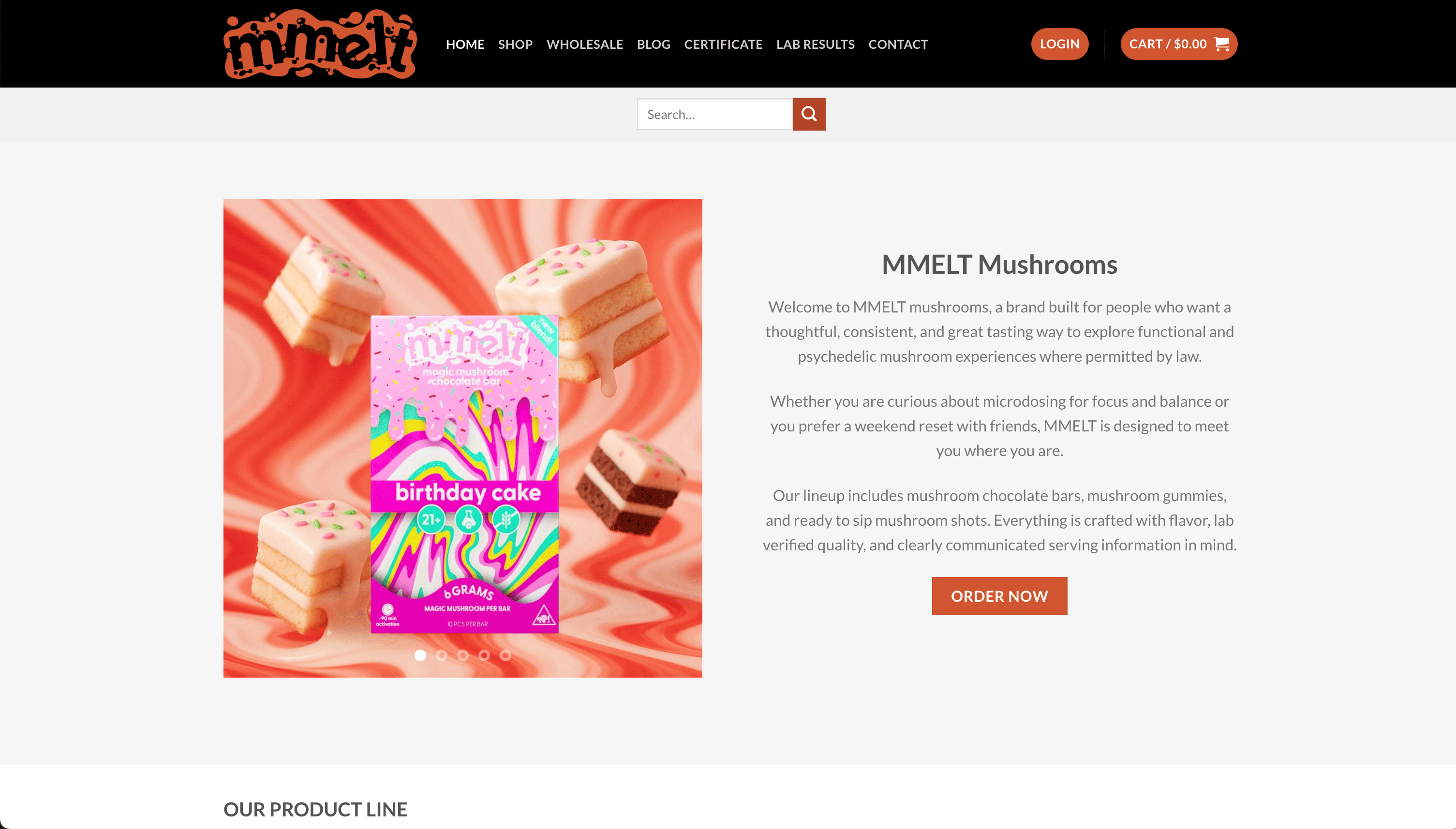Blog
8 Essential Mushroom Consumption Tips for Health
Mushrooms are taking over kitchens and wellness routines everywhere, and for good reason. One study found that eating just 18 grams of mushrooms a day may lower your cancer risk by up to 45 percent. Pretty wild, right? People usually think of mushrooms as bland sides or salad fillers, but it turns out their real power lies in a stunning mix of nutrition, variety, and surprising health effects few other foods can match.
Table of Contents
- Choose The Right Type Of Mushroom For You
- Properly Prepare Mushrooms For Maximum Benefits
- Start With Small Portions When Trying New Types
- Experiment With Different Cooking Methods
- Understand The Nutritional Benefits Of Mushrooms
- Look For Trusted Sources And Quality Products
- Consider Potential Allergies And Interactions
- Incorporate Mushrooms Into Your Daily Diet
Quick Summary
| Takeaway | Explanation |
|---|---|
| Choose mushrooms based on health goals. | Select mushroom types that align with your specific wellness objectives, such as immune support or cognitive enhancement. |
| Cook mushrooms to maximize benefits. | Cooking unlocks nutrients and eliminates toxins, enhancing their digestibility and health properties. |
| Start with small portions when trying new types. | Introducing new mushroom varieties should be gradual to monitor individual reactions and ensure safety. |
| Source from reputable suppliers for quality. | Always purchase mushrooms from trusted vendors who provide transparency about their sourcing and testing practices. |
| Incorporate mushrooms consistently into your diet. | Regularly add a variety of mushrooms to meals to boost nutrition and support overall health. |
1: Choose the Right Type of Mushroom for You
Selecting the appropriate mushroom type is crucial for maximizing your health benefits and enjoyment. Not all mushrooms are created equal, and understanding their unique properties can transform your wellness journey. Our functional mushrooms usage guide offers comprehensive insights into various mushroom varieties.
According to research from the Harvard T.H. Chan School of Public Health, different mushroom species offer distinct nutritional profiles. Some key considerations when choosing mushrooms include:
-
Specific Health Goals: Determine whether you want immune support, cognitive enhancement, or stress reduction
-
Taste Preferences: Some mushrooms have stronger flavors that might require culinary preparation
-
Personal Tolerance: Individual reactions to mushroom varieties can vary significantly
White button mushrooms are excellent for beginners, offering mild flavor and broad nutritional benefits. Shiitake mushrooms provide potent immune-boosting compounds, while lion’s mane is renowned for potential cognitive support. Reishi mushrooms are celebrated for their adaptogenic properties, helping manage stress and supporting overall wellness.
Consider consulting with a healthcare professional to understand which mushroom varieties align best with your personal health objectives. Factors like existing medical conditions, current medications, and individual metabolic responses can influence your ideal mushroom selection.
Remember that quality matters immensely. Always source mushrooms from reputable suppliers who conduct rigorous testing and provide transparent product information. Start with small quantities and observe how your body responds, gradually incorporating different mushroom types into your wellness routine.
2: Properly Prepare Mushrooms for Maximum Benefits
Preserving the nutritional integrity of mushrooms requires strategic preparation techniques. Our comprehensive wellness guide can provide additional context for optimal mushroom handling.
According to scientific research, cooking mushrooms is essential for unlocking their full nutritional potential and reducing potential toxins. Raw mushrooms contain compounds that can be challenging to digest and may harbor harmful substances.
Key preparation strategies include:
-
Thorough Cleaning: Gently rinse mushrooms under cool water to remove dirt without waterlogging
-
Cooking Methods: Prioritize methods like sautéing, roasting, or steaming to enhance nutrient bioavailability
Different mushroom varieties require unique preparation approaches. Delicate mushrooms like oyster and enoki need minimal cooking, while denser varieties like shiitake benefit from longer heating periods. Avoid soaking mushrooms, as they quickly absorb water and lose their concentrated flavor and nutritional density.
Temperature and duration are critical factors. Most mushrooms should be cooked at medium heat to preserve their structural integrity and nutritional compounds. Overcooking can degrade beneficial enzymes and reduce overall nutritional value.
For dried mushrooms, rehydration techniques matter. Soak them in warm water for 20-30 minutes, reserving the liquid as a flavorful base for soups or sauces. This method ensures you retain maximum nutrients and extract potent flavor profiles.
Experimentation is key. Different cooking techniques can dramatically transform mushroom taste and texture, making them more palatable and nutritionally accessible. Always source high-quality, fresh mushrooms from reputable suppliers to guarantee the best possible nutritional experience.
3: Start with Small Portions When Trying New Types
When exploring mushroom varieties, cautious consumption is paramount. Our delicious mushroom edibles guide offers additional insights into safe mushroom exploration.
According to expert mycological guidance, introducing new mushroom types requires a methodical and gradual approach. Individual reactions can vary significantly, making it critical to implement a careful sampling strategy.
Key guidelines for safe mushroom introduction include:
-
Portion Control: Consume no more than two cooked teaspoons of a new mushroom species
-
Waiting Period: Allow 24 hours between trying different mushroom varieties to monitor potential reactions
Individual Sensitivity Matters. Some people might experience allergic reactions, digestive issues, or unexpected metabolic responses when encountering new mushroom species. Factors like personal health history, existing medical conditions, and genetic predispositions can influence how your body responds.
People with compromised immune systems, chronic health conditions, or known food sensitivities should consult healthcare professionals before experimenting with new mushroom types. Tracking your body’s response systematically helps identify potential compatibility issues.
Documenting your experience can be beneficial. Note any changes in digestion, energy levels, mood, or potential side effects after consuming a new mushroom variety. This personal log can help you understand your body’s unique interaction with different mushroom species.
Remember that quality and sourcing are crucial. Always obtain mushrooms from reputable suppliers who provide transparent information about origin, cultivation methods, and potential allergens. Start slow, listen to your body, and enjoy the gradual process of discovering mushroom varieties that work best for your individual wellness journey.
4: Experiment with Different Cooking Methods
Cooking techniques profoundly impact mushroom flavor, texture, and nutritional value. Explore our functional mushroom edibles guide for innovative preparation ideas.
According to recent scientific research, different cooking methods significantly alter mushroom properties. Each technique offers unique benefits and challenges for preserving nutritional integrity.
Recommended cooking approaches include:
-
Sautéing: Quick, high-heat method that maintains mushroom structure and enhances flavor
-
Roasting: Concentrates flavors and creates delightful caramelization
Temperature and duration are critical factors. Low to medium heat preserves delicate nutritional compounds, while high-temperature methods can potentially degrade beneficial enzymes. Gentle cooking techniques like steaming and microwaving often retain more antioxidants compared to deep-frying.
Different mushroom varieties respond uniquely to cooking methods. Delicate mushrooms like enoki require minimal heat, whereas robust varieties like portobello benefit from longer cooking times. Experimenting with marinades, seasonings, and complementary ingredients can transform mushroom dishes from bland to extraordinary.
Consider pairing cooking methods with specific mushroom types. Shiitake mushrooms develop rich, meaty flavors when grilled, while oyster mushrooms shine when quickly stir-fried. Lion’s mane mushrooms can mimic seafood textures when properly sautéed, offering versatile culinary experiences.
Remember that overcooking diminishes nutritional value. Aim for methods that maintain mushroom structural integrity while enhancing digestibility and flavor. Fresh, high-quality mushrooms combined with thoughtful preparation techniques will elevate your culinary and wellness journey.
5: Understand the Nutritional Benefits of Mushrooms
Mushrooms represent a powerful nutritional powerhouse that extends far beyond basic dietary requirements. Learn more about functional mushroom varieties to deepen your understanding of their remarkable properties.
According to research from UCLA Health, consuming approximately 18 grams of mushrooms daily may reduce cancer risk by up to 45%. This extraordinary benefit stems from their high concentration of ergothioneine, a potent antioxidant that protects cellular structures.
Key nutritional highlights include:
-
Immune System Support: Rich in beta-glucans that enhance immune cell function
-
Antioxidant Powerhouse: Contains unique compounds like selenium and ergothioneine that combat oxidative stress
Mineral Density makes mushrooms exceptional. They provide critical nutrients like copper, supporting red blood cell production, and potassium, which maintains heart rhythm and muscle function. Each mushroom variety offers a distinct nutritional profile, making diversity in consumption highly beneficial.
Different mushroom types provide specialized benefits. Lion’s mane supports cognitive function, reishi mushrooms offer stress reduction, and cordyceps can enhance athletic performance. The complex biochemical composition of mushrooms makes them more than just a food source they are potential therapeutic agents.
Nutritional absorption varies with preparation method. Cooking can enhance the bioavailability of certain nutrients while preserving the mushroom’s intrinsic health-promoting properties. Raw consumption might limit your ability to access some of these profound nutritional benefits.
Consider mushrooms as a holistic wellness tool. Their combination of vitamins, minerals, and bioactive compounds positions them as a remarkable dietary supplement with potential long-term health implications.
6: Look for Trusted Sources and Quality Products
Navigating the mushroom marketplace requires discernment and strategic evaluation. Our comprehensive wellness guide provides additional insights into product selection.
According to scientific research, identifying high-quality mushroom products demands a comprehensive approach. Not all mushroom sources maintain the same standards of quality, safety, and nutritional integrity.
Critical evaluation criteria include:
-
Third-Party Lab Testing: Verification of purity, potency, and absence of contaminants
-
Transparent Sourcing: Clear information about mushroom origin, cultivation methods, and processing
Purchasing from reputable suppliers is fundamental. Look for vendors who provide detailed product documentation, including cultivation techniques, harvest processes, and comprehensive laboratory reports. Authentic providers will readily share information about their mushroom species, growing environments, and potential health considerations.
Quality markers extend beyond packaging claims. Examine product characteristics such as color consistency, absence of unusual odors, and proper packaging integrity. Fresh or well-preserved mushroom products should demonstrate visual and sensory indicators of superior quality.
Beware of marketing claims that seem too extraordinary. Legitimate mushroom providers will offer scientifically grounded information rather than exaggerated promises. Cross-reference product information with peer-reviewed research and expert nutritional guidance.
Consider additional factors like organic certification, sustainable farming practices, and commitment to ecological responsibility. These elements often correlate with higher-quality mushroom products that prioritize both consumer health and environmental stewardship.
Remember that price is not always an absolute indicator of quality. Careful research, understanding product origins, and verifying scientific claims will guide you toward mushroom sources that genuinely support your wellness journey.
7: Consider Potential Allergies and Interactions
Mushroom consumption requires thoughtful consideration of individual health profiles and potential physiological responses. Our functional mushroom guide offers deeper insights into personalized mushroom consumption.
According to scientific research, mushroom allergies and drug interactions are significant health considerations that demand careful attention. Not everyone responds identically to mushroom consumption, making individual assessment crucial.
Key potential risks include:
-
Allergic Reactions: Respiratory symptoms, skin irritations, and digestive complications
-
Medication Interactions: Possible interference with anticoagulant and immunosuppressive drugs
Individuals with pre-existing health conditions should exercise extra caution. People with autoimmune disorders, compromised immune systems, or ongoing medical treatments must consult healthcare professionals before integrating new mushroom varieties into their diet.
Symptoms of mushroom allergies can range from mild to severe. Immediate medical attention is recommended if you experience sudden breathing difficulties, skin rashes, swelling, or intense gastrointestinal distress after mushroom consumption.
Cross-reactivity is another critical factor. Individuals allergic to certain fungi or molds might experience similar reactions to specific mushroom species. This biological mechanism underscores the importance of gradual introduction and careful monitoring.
Medication interactions can be complex and nuanced. Mushrooms like reishi and cordyceps might influence blood clotting, potentially affecting individuals on blood-thinning medications. Similarly, some mushroom varieties can modulate immune system responses, which could complicate treatments for autoimmune conditions.
Prevention and awareness are your best strategies. Start with small quantities, monitor your body’s response, and maintain open communication with healthcare providers about your mushroom consumption intentions.
8: Incorporate Mushrooms into Your Daily Diet
Transforming your nutrition strategy requires creative and consistent mushroom integration. Learn about top wellness mushrooms to expand your culinary repertoire.
According to Harvard’s School of Public Health, mushrooms offer remarkable nutritional diversity that can seamlessly enhance everyday meals. Their versatility allows for multiple incorporation strategies across different dietary preferences.
Practical integration techniques include:
-
Breakfast Additions: Blend into morning omelets or smoothies
-
Lunch Enhancements: Slice into salads or use as sandwich toppings
Mushrooms provide an extraordinary range of nutrients, including selenium, vitamins B and D, and powerful antioxidants. Their umami flavor profile makes them an excellent meat substitute for vegetarians and those seeking protein-rich alternatives.
Culinary exploration is key. Experiment with different cooking methods like roasting, sautéing, and grilling to discover your preferred preparation style. Each technique unlocks unique flavor profiles and nutritional potentials.
Consider diversifying your mushroom selections. While white button mushrooms are common, varieties like shiitake, oyster, and lion’s mane offer distinct tastes and potential health benefits. Rotating between different types ensures a broader nutrient intake.
Integrate mushrooms into familiar recipes by finely chopping or grinding them into sauces, stews, and casseroles. This approach allows seamless nutrient absorption without dramatically altering meal structures.
Remember that consistency matters more than volume. Regular, moderate mushroom consumption can contribute to long-term wellness goals, supporting immune function and potentially reducing chronic disease risks.
Below is a comprehensive table summarizing the article’s eight essential tips for healthier mushroom consumption, including best practices, benefits, and key considerations for safe and effective integration into your diet.
| Tip / Section | Key Actions & Recommendations | Core Benefits & Outcomes |
|---|---|---|
| Choose the Right Type of Mushroom | Select varieties based on personal health goals, taste, and tolerance; consult healthcare professionals as needed | Personalized wellness support (immune boost, cognitive enhancement, stress reduction) |
| Prepare Mushrooms Properly | Clean thoroughly and cook using methods like sautéing, roasting, or steaming; do not eat raw | Maximized nutrient absorption, toxin removal, better digestion |
| Start with Small Portions When Trying New Types | Begin with two cooked teaspoons of a new variety; wait 24 hours between new types; document reactions | Improved safety, minimized risk of adverse reactions or allergies |
| Experiment with Cooking Methods | Use various techniques (sautéing, roasting, steaming) matched to mushroom type; avoid overcooking | Enhanced taste, texture, and nutritional profile |
| Understand Nutritional Benefits | Learn each species’ unique nutrients (e.g., antioxidants, beta-glucans, minerals); diversify types consumed | Immune support, antioxidant boost, reduced disease risk (e.g., cancer) |
| Source from Trusted, Quality Suppliers | Buy from reputable vendors with third-party testing, transparent sourcing, and good packaging | Safety, consistent potency, and reduced contamination risk |
| Consider Allergies and Interactions | Monitor for symptoms (allergic reactions, drug interactions); consult healthcare provider if necessary | Personalized safety, avoidance of medical complications |
| Incorporate into Your Daily Diet | Add to multiple meals (breakfast, lunch, dinner); rotate types and cook creatively | Consistent wellness support, improved nutrition, and potential chronic disease risk reduction |
Take the Guesswork Out of Safe, Effective Mushroom Consumption
Ready to put your new mushroom knowledge into action, but feeling unsure about safe sourcing or precise dosing? You are not alone. As highlighted in the article, the biggest barriers to healthy mushroom consumption are finding trusted products and understanding exact benefits for your unique goals. Many people worry about mislabeled items, inconsistent dosing, or lack of transparent testing. At MMELT Mushrooms, we address all these concerns with clearly labeled, lab-verified mushroom edibles. Our range lets you confidently explore functional and psychedelic varieties like gummies and chocolates, each with detailed instructions for dosing and wellness.

Start your wellness journey the smart way. Visit our main shop for top-quality edibles, or check out this blog guide on mushroom usage that builds on today’s tips. Experience transparency, safety, and support every step of the way. Join a trusted community and make every bite count. Shop now for products you can trust.
Frequently Asked Questions
What are the health benefits of consuming mushrooms?
Mushrooms are rich in nutrients, antioxidants, and compounds that support immune function, cognitive health, and may even reduce cancer risk. Varieties like lion’s mane and reishi offer specialized benefits such as cognitive enhancement and stress reduction.
How should I prepare mushrooms to maximize their health benefits?
Cooking mushrooms is essential to unlock their full nutritional potential. Methods like sautéing, roasting, or steaming enhance nutrient bioavailability. Avoid raw consumption as it may hinder digestion and retain harmful substances.
How do I start incorporating mushrooms into my diet safely?
When trying new mushroom varieties, begin with small portions—no more than two cooked teaspoons. Allow a 24-hour waiting period before trying another type to monitor any reactions. Document your experiences to understand how your body responds.
What should I look for when sourcing mushrooms?
Choose mushrooms from reputable suppliers that provide third-party lab testing, transparent sourcing information, and clear product documentation. Quality indicators include color consistency and absence of unusual odors, ensuring the best nutritional experience.
Recommended
- 7 Essential Tips for Your Mushroom Wellness List – MMELT
- 8 Delicious Examples of Mushroom Edibles to Try – MMELT
- 7 Top Mushrooms for Wellness: Boost Your Health Naturally – MMELT
- Essential Functional Mushrooms Usage Guide for Health & Wellness – MMELT

